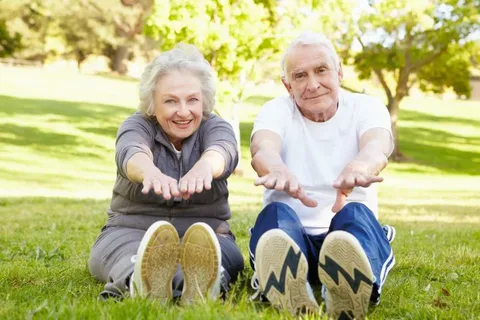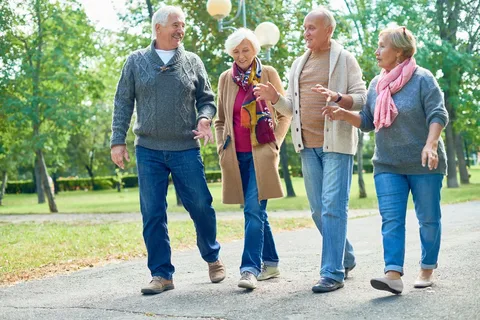As we age, the comfort of our shoes becomes increasingly essential. The wrong pair of shoes can cause discomfort, soreness, and even severe injuries like sprains or fractures. In this blog post, we will explore the importance of comfortable Older People Shoes and why they should be taken into consideration when selecting footwear. We will discuss why comfort matters, the types of shoes available, and some tips to ensure you get the most out of your shoes.
The Risk of Falls Among Older Adults
As we age, the risk of falls becomes a significant concern for older adults. Falls can result in severe injuries and have a long-lasting impact on our overall health and well-being. And one of the leading causes of falls among older adults? Improper footwear.
Wearing the wrong shoes can increase the risk of tripping or losing balance, especially if they lack support or have slippery soles. That’s why selecting shoes that provide stability and traction is crucial for preventing falls and promoting safety.
But it’s not just about preventing falls – foot health is also a significant consideration. As we age, our feet change, such as reduced arch support, decreased cushioning, or wider feet. These changes can lead to foot conditions like bunions, plantar fasciitis, or arthritis. Choosing shoes that accommodate these changes and provide the necessary support and cushioning is essential for maintaining foot health.
Factors That Affect Foot Health in Old Age
As we age, our feet undergo various changes that can impact our foot health. These factors should be taken into consideration when choosing footwear for older adults.
One main factor affecting foot health in old age is reduced arch support. Over time, the arches of our feet tend to flatten, leading to a loss of natural support. It can result in discomfort, fatigue, and even foot conditions such as plantar fasciitis. Choosing shoes with proper arch support can alleviate these issues and provide much-needed stability.
Another factor to consider is decreased cushioning. As we get older, the fatty padding on the soles of our feet thins out, causing a decrease in cushioning. It can result in pain and discomfort when walking or standing for long periods. Look for shoes that offer adequate cushioning to absorb impact and provide extra comfort.
Additionally, many older adults experience wider feet due to changes in foot structure or conditions such as arthritis. Wearing narrow or tight shoes can lead to discomfort, blisters, and even foot deformities. Opt for shoes with a wider toe box to accommodate wider feet and allow for proper toe movement.
Characteristics of Good Older People’s Shoes
When it comes to choosing shoes for older adults, there are several important characteristics to consider. Good older people’s shoes should prioritize comfort, support, and safety to meet the unique needs of aging feet.
First and foremost, comfort is critical. Look for shoes with ample cushioning to provide a soft and supportive foundation for your feet. Memory foam or gel insoles can also help absorb impact and reduce pressure on sensitive areas. Opt for shoes with a roomy toe box to accommodate foot deformities or conditions like bunions.
Support is another crucial aspect to consider. Look for shoes with proper arch support to help maintain the natural alignment of your feet and prevent issues like flat feet or plantar fasciitis. A sturdy and stable sole is also essential to provide balance and prevent falls. Non-slip soles with good traction can help prevent accidents on slippery surfaces.
Importance of Proper Fit in Preventing Falls
Proper fit plays a crucial role in preventing falls among older adults. When it comes to shoes, finding the right size and fit is essential for stability and balance. Ill-fitting shoes can be a major contributing factor to trips and slips, leading to dangerous falls.
When shoes are too big, the feet can easily slide inside, causing instability and increasing the risk of losing balance. On the other hand, shoes that are too small can constrict the feet, leading to discomfort and compromised circulation. Both scenarios can make it challenging to maintain a steady gait, especially for those with existing mobility issues or conditions like arthritis.
To ensure a proper fit, it is recommended to have your feet measured regularly, as our feet can change in size and shape over time. Consider visiting a specialty shoe store or consulting with a podiatrist to get accurate measurements and recommendations. Pay attention to the shoe’s width, length, and depth, as these factors can significantly impact comfort and stability.
It is also essential to try on shoes with the socks or inserts you plan to wear regularly. It will ensure a realistic fit and help you gauge their comfort and support level. Walk around in the shoes to test their stability and ensure they feel secure.
Top Shoe Features for Elderly Safety and Comfort
Safety and comfort should be the top priorities when choosing shoes for older adults. With age, our feet become more susceptible to injuries and conditions that can affect our mobility and overall well-being. That’s why looking for shoes with specific features that enhance safety and provide maximum comfort is crucial.
 One of the top shoe features for elderly safety is a non-slip sole with good traction. It helps to prevent accidents on slippery surfaces and ensures stability when walking or standing. Additionally, a sturdy and stable sole is essential to provide balance and support, reducing the risk of falls.
One of the top shoe features for elderly safety is a non-slip sole with good traction. It helps to prevent accidents on slippery surfaces and ensures stability when walking or standing. Additionally, a sturdy and stable sole is essential to provide balance and support, reducing the risk of falls.
Another critical feature is proper arch support. Our arches tend to flatten as we age, leading to discomfort and foot conditions such as plantar fasciitis. Shoes with proper arch support can help alleviate these issues and provide the necessary stability for healthy foot mechanics.
In terms of comfort, look for shoes with ample cushioning to provide a soft and supportive foundation for your feet. Memory foam or gel insoles can also help absorb impact and reduce pressure on sensitive areas. A roomy toe box is also essential to accommodate any foot deformities or conditions like bunions.
Common Foot Problems in Older Adults and Their Shoe Solutions
As we age, our feet undergo changes, leading to various foot problems. Understanding these common foot issues in older adults and how to address them with the right shoes is essential.
One common problem is bunions, bony bumps on the joint at the base of the big toe. It can cause discomfort and difficulty finding shoes that fit properly. Look for shoes with a wide toe box to accommodate bunions and avoid narrow or tight-fitting shoes.
Another issue is plantar fasciitis, which causes heel pain and inflammation. To alleviate this, choose shoes with good arch support and cushioning. Orthotic inserts can also provide extra support and help reduce discomfort.
Arthritis is another condition that can affect the feet, causing pain, swelling, and limited mobility. Shoes with cushioning and shock absorption can help alleviate these symptoms. Adjustable straps or laces can also provide a customized fit, accommodating any foot swelling.
Practical Tips for Choosing and Wearing Older People Shoes
When it comes to choosing and wearing Older People Shoes as we age, there are a few practical tips that can help ensure comfort, safety, and overall foot health. Here are some tips to consider:
- Get a proper foot measurement: As our feet can change in size and shape over time, it’s essential to measure them regularly. It will ensure you are selecting the correct shoe size and fit.
- Consider shoe width: Many older adults experience wider feet due to changes in foot structure or conditions like arthritis. Look for shoes with a wider toe box to accommodate wider feet and prevent discomfort or deformities.
- Prioritize comfort and cushioning: Look for shoes with ample cushioning and support to provide a soft and supportive foundation for your feet. Memory foam or gel insoles can also help absorb impact and reduce pressure on sensitive areas.
- Look for proper arch support: Our arches tend to flatten as we age, leading to discomfort and foot conditions. Choosing shoes with proper arch support can alleviate these issues and provide the necessary stability for healthy foot mechanics.
- Consider non-slip soles with good traction: To prevent falls, especially on slippery surfaces, opt for shoes with non-slip soles and good traction. It will ensure stability and reduce the risk of accidents.
- Attention to adjustability: Shoes with adjustable straps or laces can provide a customized fit, accommodating any foot swelling throughout the day.
- Try on shoes with your regular socks or inserts: To ensure a realistic fit and level of comfort, try on shoes with the socks or inserts you plan to wear regularly. It will help you gauge the fit and support they provide.
FAQ’s
1. Q: Are any specific shoe brands recommended for older adults?
A: While there isn’t a one-size-fits-all answer to this question, several reputable shoe brands cater to older adults’ needs. However, it’s important to remember that everyone’s feet are different, so what works for one person may not work for another. It’s always a good idea to try on shoes and see how they feel before making a purchase.
2. Q: How often should I replace my older people shoes?
A: Shoes’ lifespan can vary depending on usage, materials, and individual wear patterns. As a general rule of thumb, replacing shoes every 6 to 12 months or when you notice signs of wear and tear, loss of cushioning, or decreased support is recommended.
3. Q: Can I wear sandals or flip-flops instead of closed-toe shoes?
A: While sandals and flip-flops may be convenient and easy to slip on, they may provide a different level of support and stability than closed-toe shoes. For older adults, it’s generally recommended to prioritize closed-toe shoes that offer more protection and coverage for the feet.
Conclusion
The comfort of our shoes becomes increasingly vital as we age. Wearing the wrong shoes can lead to discomfort, soreness, and severe injuries. It’s crucial to prioritize comfortable older people’s shoes that provide support, cushioning, and stability. Consider the factors that affect foot health in old age and choose shoes that accommodate these changes. Remember to prioritize safety by selecting shoes with non-slip soles and good traction. Following these tips and taking care of your feet can enhance your safety, well-being, and foot health as you age.
| Other Good Articles to Read |
| Skank Blogs |
| Unreal Blogs |
| Tba Blogs |
| All City Forums |
| Dany Blogs |
| Refuge Blogs |
| The Music Blogs |
| Key Forums |
| The Big Blog Theory |
| Joe Blogs |
| Blogs 4 Me |
| Blogs Emon |


